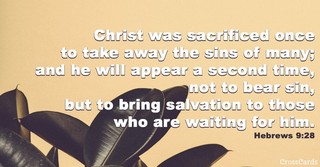- Recent Translations
- All Translations
Yehudim in Moshiach 9:1
Share
Settings
Yehudim in Moshiach 9:1 Meaning and Commentary
Then verily the first covenant had ordinances of divine
service
The design of the apostle in this chapter, as it stands in connection with what goes before, is to show the pre-eminence of Christ, from the tabernacle, and the things in it; as well as from the priesthood and covenant; and as also the abrogation of the Levitical ceremonies in particular, as well as the first covenant in general; and that they were all types and figures of Christ, and had their fulfilment in him: the word "first", here used, designs not the tabernacle, but the covenant; therefore it is rightly thus supplied in our version, as it is in the Arabic and Ethiopic versions: which is said to have "ordinances of divine service"; belonging to the service of God, which was performed both by the priests, and by the people; and these ordinances were no other than the carnal ordinances, or rites of the ceremonial law: the word used signifies "righteousnesses"; and they are so called, because they were appointed by a righteous God; and were imposed on the people of the Jews in a righteous way; and by them men became externally and typically righteous; for they were figures and types of justification by the righteousness of Christ, though no complete, perfect, real righteousness, came by them.
And a worldly sanctuary.
Philo the Jew says F12, it was a type of the world, and of the various things in it; though it was rather either a type of the church, or of heaven, or of Christ's human nature: the better reason of its being so called is, because it consisted of earthly matter, and worldly things; it was in the world, and only had its use in the world, and so is opposed to the heavenly sanctuary; for the Jews often speak of (hlemlv vdqm) , "a sanctuary above", and (hjmlv vdqm) , "a sanctuary below" F13, and of (alyeld ankvm) , "a tabernacle above", and (attld ankvm) , "a tabernacle below" F14; which answered to one another: the words may be rendered "a beautiful sanctuary", a well adorned one; and such especially was the temple, or sanctuary built by Solomon, rebuilt by Zerubbabel, and repaired and adorned by Herod, ( Luke 21:5 ) . And the Jews say, that he that never saw Herod's building, meaning the temple, never saw a beautiful building; see ( Luke 21:5 ) .
F12 De Vita Mosis, p. 667.
F13 Jarchi in Gen. xxviii. 17.
F14 Zohar in Exod. fol. 65. 4. & 94. 4. & 96. 2. & in Lev. fol. 1. 3.
